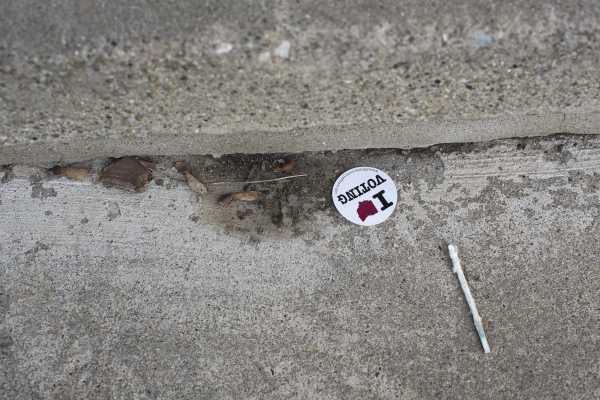
Ohio voters during Tuesday’s midterm elections rejected Issue 1, which would have defelonized drug possession in the state and taken other steps to pull back mass incarceration.
Under Ohio law, drug possession can be punished as a felony, resulting in jail and prison time.
Issue 1 would have changed that, reducing all drug possession offenses to misdemeanors. It also would have made it harder to imprison or jail people for such offenses, reduced the use of prison time for non-criminal probation violations, and let people in prison, except those incarcerated for murder, rape, or child molestation, seek sentence reductions up to 25 percent if they participate in rehabilitative programs, up from 8 percent under current rules. It would have applied the financial savings (from having fewer people in prison) to addiction treatment programs and crime victim funds.
But voters rejected the measure.
Related
Live results: Ohio midterm elections
The proposal was put forward by the Ohio Safe and Healthy Communities Campaign, also known as Yes on 1. Financially, it received a lot of outside support — including from the Chan Zuckerberg Initiative (which is in part owned by Facebook founder Mark Zuckerberg), the Open Society Policy Center (founded by liberal billionaire George Soros), and the Open Philanthropy Project.
Issue 1 became politically contentious in the state. Ohio Attorney General Mike DeWine, the Republican running for governor, said it would be “devastating,” arguing that it would attract more drug dealers to the state. (There’s no evidence for this claim.) Richard Cordray, the Democratic candidate for governor, argued that the measure would “set the way toward a policy of being smart on crime in the future, smart on how we use taxpayers’ dollars, smart on how we build people’s potential to be productive citizens in our society.”
Only five states have defelonized drugs. It started with California in 2014, when its voters approved Proposition 47. Since then, Connecticut, Utah, Alaska, and Oklahoma have enacted similar measures, according to a report on the laws by the Urban Institute’s Justice Policy Center.
Urban researchers Brian Elderbroom and Julia Durnan wrote that the measures cut prison populations and saved money, letting resources go to areas besides prisons. In California, for example, state officials estimated that “Proposition 47 reduced prison spending by $68 million in the first year alone, and California awarded more than $100 million in grants to local governments for mental health treatment, victims’ services, and crime prevention programs.”
California’s measure also didn’t lead to more crime, Elderbroom and Durnan noted: “Crime analyses conducted in 2018 found that while rates of certain property crimes in California have increased slightly over the past several years, there is no causal relationship between passage of Proposition 47 and crime.”
The Urban researchers concluded: “Reclassifying drug possession from a felony to a misdemeanor can reduce the negative impacts imposed on people and communities by felony convictions, reduce imprisonment of people convicted of drug possession, and redirect limited resources to treatment and prevention without negatively impacting public safety.”
To some degree, this should be expected. Research has long indicated that the severity of punishment has very little effect on someone’s willingness to commit a crime or use drugs. For example, a 2014 study from Peter Reuter at the University of Maryland and Harold Pollack at the University of Chicago found there’s no good evidence that tougher punishments or harsher supply elimination efforts do a better job of driving down access to drugs and substance misuse than lighter penalties.
So it doesn’t matter so much if people are punished harshly (through, say, a felony) than whether they’re punished more leniently (through, say, a misdemeanor).
In Ohio, critics of Issue 1 pointed to another concern: that reducing drug offenses from felonies to misdemeanors would make it harder to get people into addiction treatment. As it stands, drug courts use the threat of criminal punishment — and prison in particular — to get drug offenders to agree to addiction treatment. If that threat were removed, then judges would be less able to push people into treatment. Critics pointed to California, where drug court participation in some areas dropped in the aftermath of Proposition 47.
But supporters of Issue 1 argued that the money produced by the initiative — which would be largely put into addiction treatment — would actually lead to more access to treatment, not less.
There are also broader philosophical questions here: Should drug addiction be left to the criminal justice system to deal with, or the health care system? Should both play a role? What’s the right balance to strike here?
These are particularly pertinent issues in Ohio, because it’s one of the states hit hardest by the opioid epidemic.
On Tuesday, voters gave an answer that favored the criminal justice system’s more punitive role.
Sourse: vox.com






